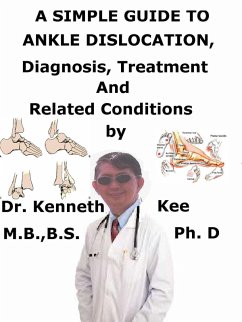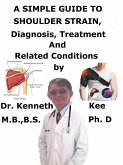Recently an old lady fell while crossing the road.
She was unable to get up and walk.
The ankle had been twisted and a bone was protruding at the back of the ankle.
This was a posterior ankle dislocation.
An ankle dislocation happens when the ankle bone (talus) is knocked out of its normal position under the lower leg bones (tibia and fibula) by an unusually strong or violent force.
Dependent on the direction that the bones move, the surrounding bones, ligaments, tendons, or cartilage may be injured.
Ankle dislocations are very often linked with fractures.
An isolated dislocated ankle is a rare injury.
Normally, there is a linked fracture of the bones that make up the ankle.
The ankle normally dislocates as a result of a fall, motor vehicle crash, or sporting injury producing damage to ligaments and bones.
Besides the bony injury, there can be injury to blood vessels, nerves, and skin.
There are 2 main sets of ligaments attaching the talus to the tibia and fibula.
The deltoid ligament attaches the tibia to the talus on the inside of the ankle.
On the outside of the ankle, the talofibular ligaments attach the fibula to the talus.
A strong force can injure the ankle ligaments.
To fracture or dislocate an ankle, the forces must be impressive.
Poor muscle strength may contribute to the ankle dislocations.
The peroneal muscles, traveling along the outside of the lower leg and cross the ankle, are accountable for bringing the foot up and out to the side.
Athletes who lack proper peroneal muscle strength may have trouble keeping their feet and legs in an appropriate position when an unexpected twist happens.
This can dislocate the talus or pop it into a position where it does not rest between and below the tibia and the fibula.
An ankle dislocation is an emergency medical situation that can possibly injure any or all of the structures in the ankle.
The blood supply or nerve connections to the ankle also may be injured.
The skin and soft tissue around the ankle may be lacerated or cut by fractured bone.
If there is suspicion of an ankle dislocation, the person should go to a hospital's emergency room as soon as possible.
Ankle dislocations are a relatively frequent type of dislocation encountered in the emergency department.
They are present in 2 forms:
A true dislocation without fracture
A fracture-dislocation, happening in the vast majority
Ankle dislocations do not happen on impulse but are a result of a trauma.
The most frequent type of ankle dislocation is the posterior dislocation, where the talus moves backward in relation to the tibia.
Anterior dislocations, where the talus is pushed forward, happen when the foot is fixed or dorsi-flexed (where the toes are pointed upward).
Lateral dislocations happen when the ankle is twisted, either inverted or everted, but there are always fractures linked with either the medial or lateral malleolus or both.
Superior dislocation depicts where the talus is jammed upward, into the space between the tibia and fibula, as a result of an axial loading injury and is termed a pilon injury.
Dislocations can be painful, with obvious deformity of the ankle joint
Diagnosis require X-rays and often a MRI.
The emergency treatment is to reduce the dislocation as soon as possible and then splint the ankle to prevent further injury.
Orthopedic consultation is normally required since surgery may be required.
TABLE OF CONTENT
Introduction
Chapter 1 Ankle Dislocation
Chapter 2 Causes
Chapter 3 Symptoms
Chapter 4 Diagnosis
Chapter 5 Treatment
Chapter 6 Prognosis
Chapter 7 Ankl...
Dieser Download kann aus rechtlichen Gründen nur mit Rechnungsadresse in A, B, CY, CZ, D, DK, EW, E, FIN, F, GR, H, IRL, I, LT, L, LR, M, NL, PL, P, R, S, SLO, SK ausgeliefert werden.









